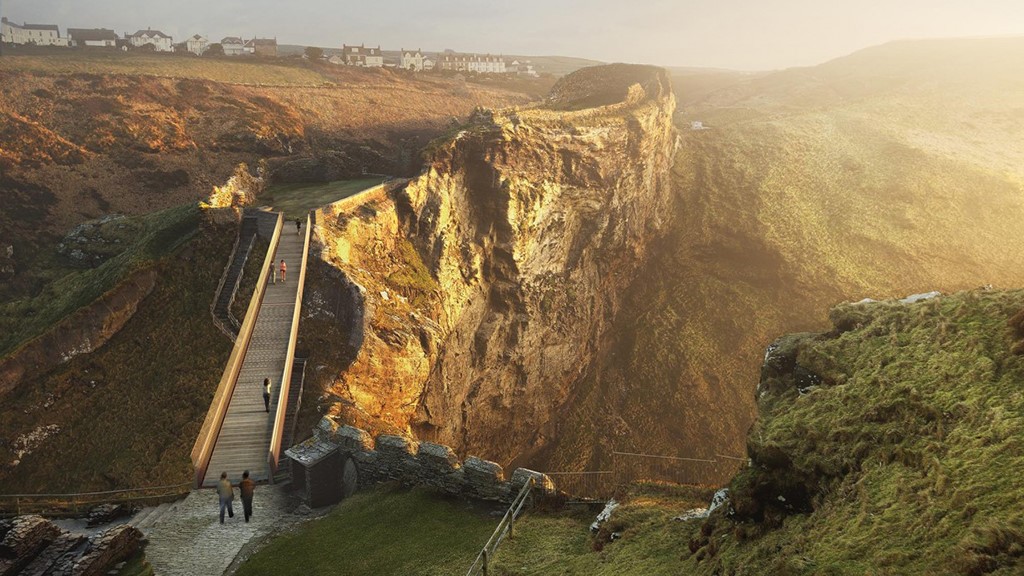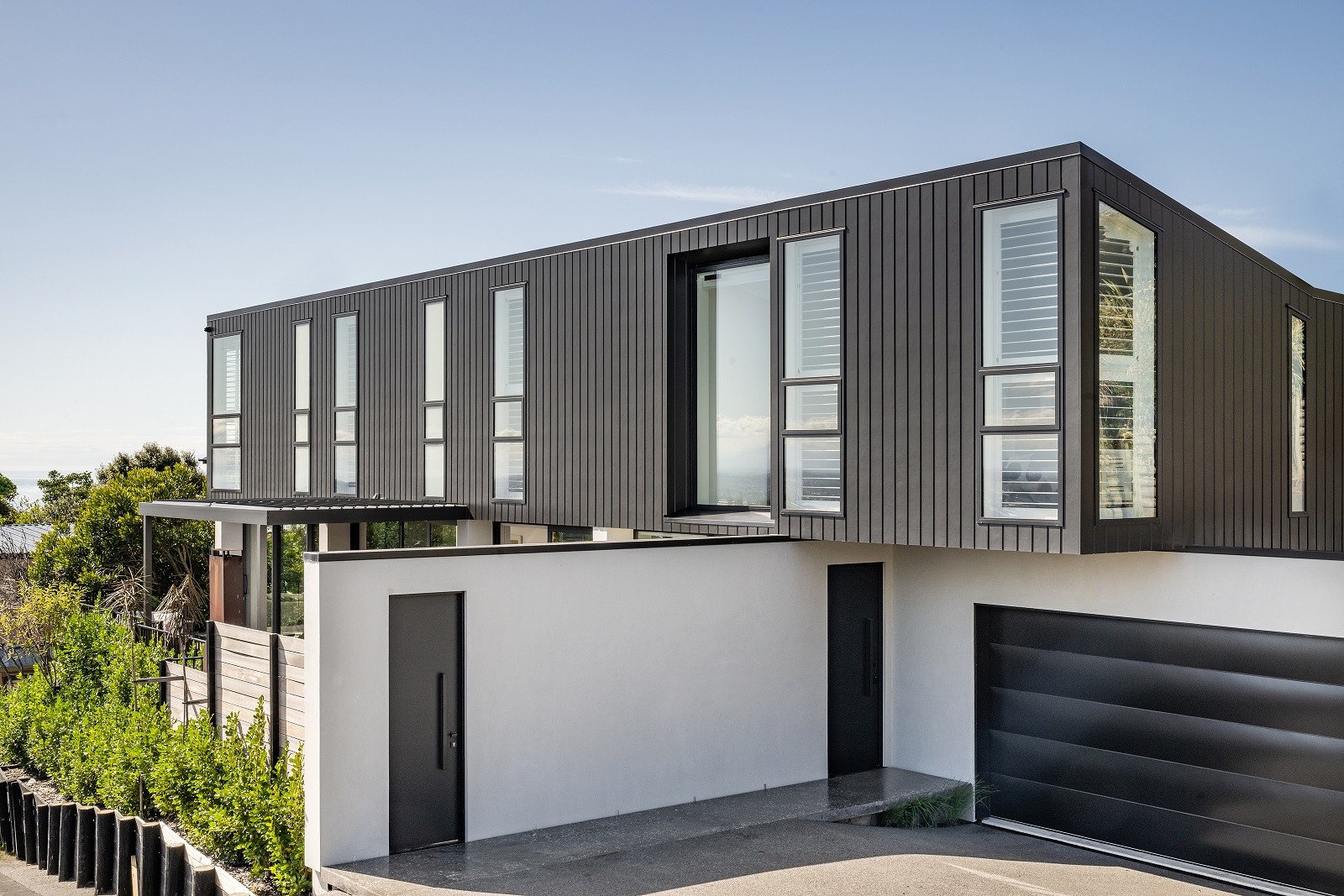It’s not often that a bridge is built with a distinctive gap at the critical point where the two sides meet, but a new Cornish footbridge does just that, and the reason is full of symbolism.
Said to be the birthplace of King Arthur, Tintagel is a stunning part of England steeped in legend. Inspired by such tales, Richard, Earl of Cornwall had a castle built on the island in the 13th century that was accessed by a narrow land bridge, which disappeared due to erosion around 500 years ago.
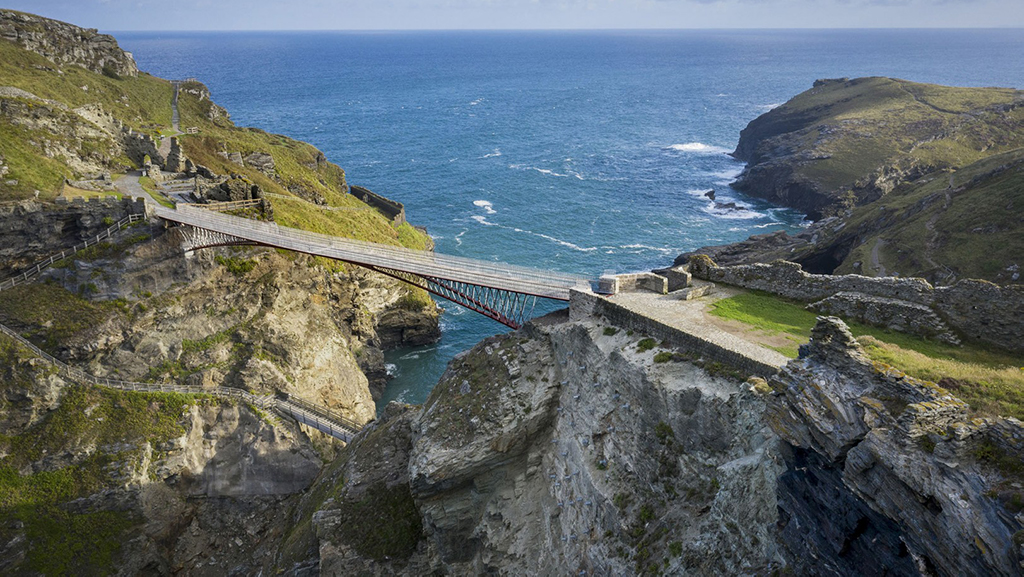
Until now, visitors to the popular tourist destination would descend many steps down the cliff and cross a small wooden bridge, then ascend back up the other side. William Mathews Associates in collaboration with Ney & Partners we were one of six shortlisted teams selected from 137 international entries asked to produce a design for a new footbridge in the same location as the old landbridge.
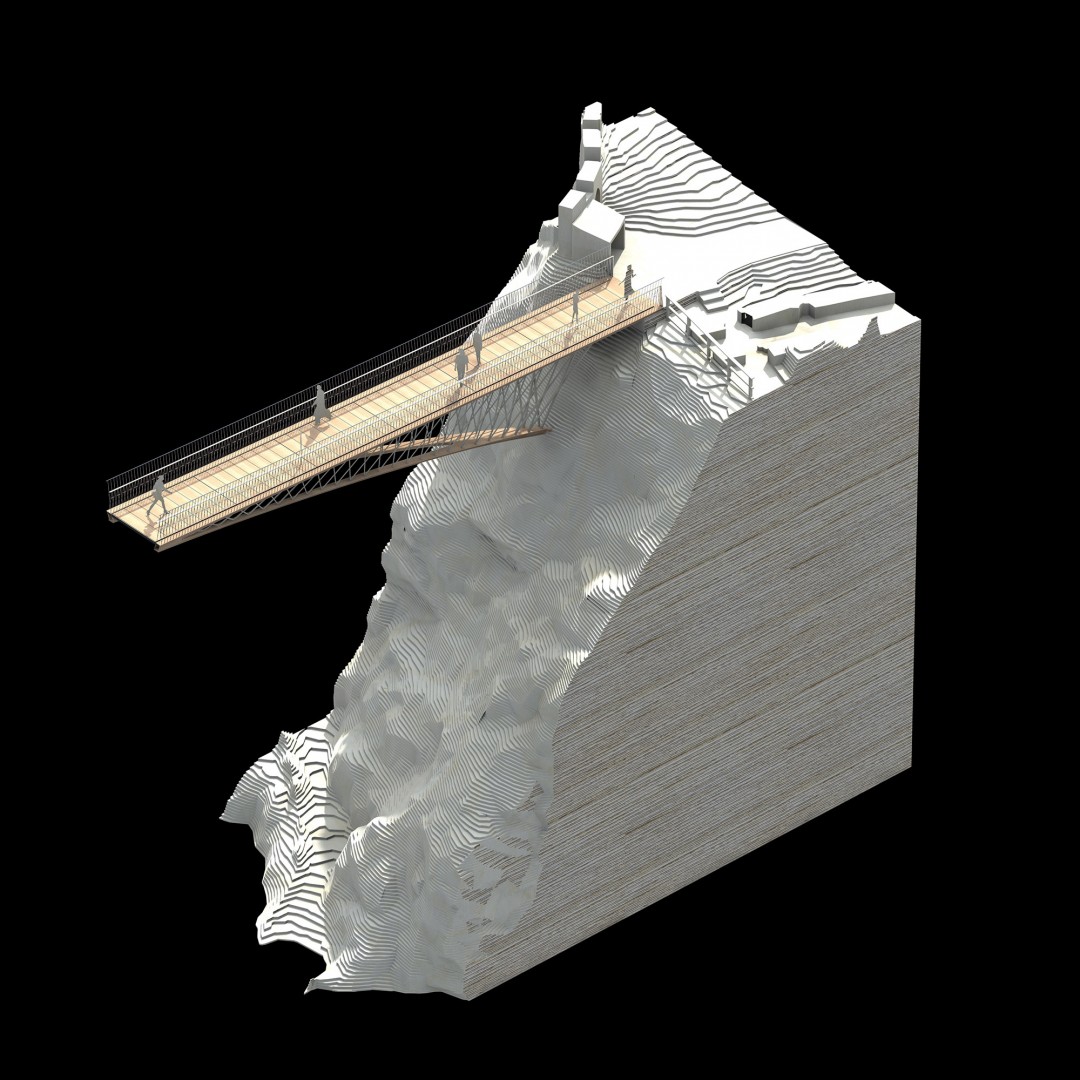
Their winning proposal was based on a simple concept: to recreate the link that once existed and fill the current void. Instead of introducing a third element that spans from side to side, they proposed two independent cantilevers that reach out and touch, almost, in the middle.

Visually the link highlights the void through the absence of material in the middle of the crossing. The structure, 4.5m high where it springs from the rock face, tapers to a thickness of 170mm in the centre, with a clear joint between the mainland and island halves. The narrow gap between them represents the transition between the mainland and the island, the present and the past, the known and the unknown, reality and legend; all the things that make Tintagel so special and fascinating.
The graceful appearance of the bridge belies its complexity. It spans a 57m-long gorge with two independent cantilevering sections that are roughly 33 m in length each. A total of 47.5 tonnes of steel was used for the structure and balustrades, along with 40,000 hand-cut locally-sourced slate tiles for the deck and 140 m (459 ft) of oak for the handrails.
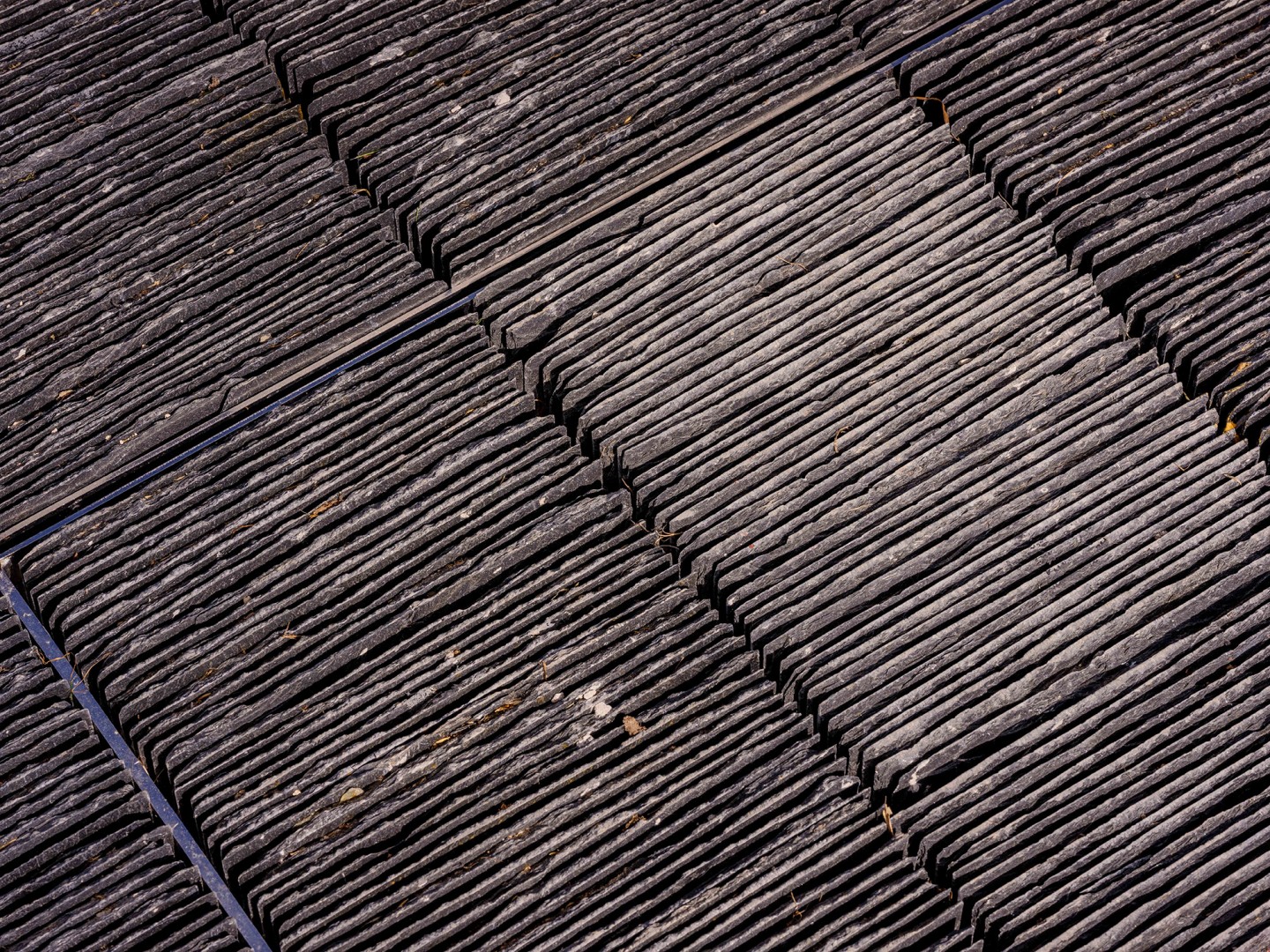
During installation, a cable crane was employed to build the bridge in a dozen sections without the need for scaffolding or supports.
The project was headed by Belgian engineers Ney & Partners and William Matthews Associates on behalf of English Heritage, a charity that cares for historic monuments, buildings and sites in England.
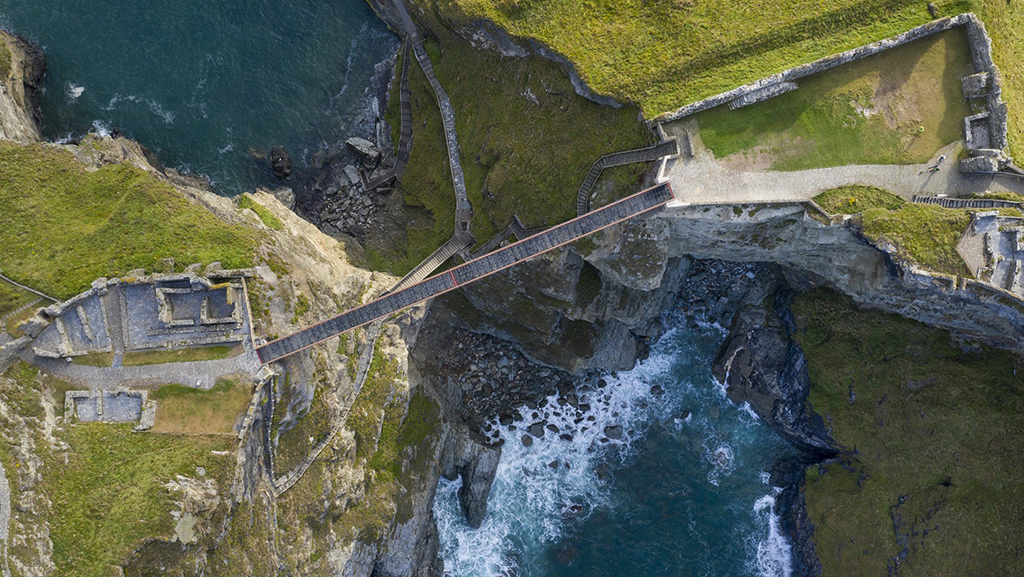
Construction of the bridge began in late 2018 and was completed in the summer of 2019.
